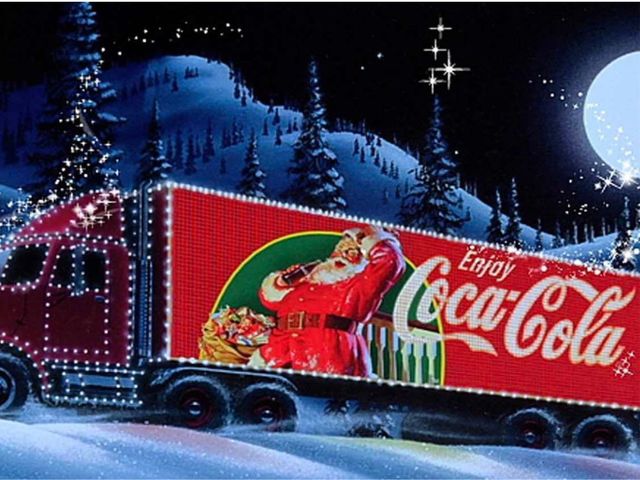Each year it comes around and each year the same battle ensues. It generally begins with a massive sales event that sweeps across a post-Thanksgiving America known as Black Friday. Although the origin of Black Friday began with Wall Street financiers conspiring to pervert the system, it has evolved into a consumer event that has gripped the globe.
Christmas may be a time for giving, a time for sharing but it is also a time to harvest the largest consumer event of the year. While consumerism floods the market, competition will be ruthless and only strong and smart marketing strategies will prevail.

Ikea ran a campaign that encouraged customers in 27 countries to trade used furniture and receive an in-store credit voucher. Items that could not be resold were recycled or donated to communities in need. Image source: YouTube.
Scarcity Marketing
In today’s post-pandemic society, online shopping, and subsequent internet marketing, has never been more prevalent. In the build-up to the holiday season, the buyer’s brain is engaged, and people are ready to spend money online but, with a virtually global reach, how does one marketer stand out among all the white noise?
As Christmas occurs over a finite period of time, the psychology of the consumer is impacted by the urgency to procure. There are some approaches that are particularly effective during the Christmas period including Scarcity Marketing.
Keywords like Sale, Limited Edition and Collectable, can generate a sense of urgency, a subconscious need to make a purchase quickly. With the pressure to have gifts purchased and wrapped before December 25th, at the very latest, people like to feel they have found something special. Those small “wins” can be the feelgood factor that inspires a customer to return.

While special offers and flash sales are effective, customers also like to feel respected and valued and so, marketers need to find a way to express their gratitude. Loyalty discounts or even something as simple as a personalised greeting, can incite a feeling of wellbeing in the consumer. Considering for many, it is the season of heightened emotions, this can have an intense impact on a buyer who may otherwise respond with cynicism at any other time of the year.
Another area that can make a brand more appealing to many, is to offer sustainable products and to address environmental issues. It is important to ensure the promise of sustainability is backed up with genuine efforts and ethically sourced goods. This tells the consumer that the seller is trustworthy and of value while eliminating any risk of being ostracised for virtue signalling.
Anticipatory advertising
While the season is one of consumerism, the drive to purchase is influenced largely by emotion over logic. The purchasing of gifts is motivated by kindness and thoughtfulness, and at Christmas, the general public is also surrounded by emotionally charged content.
Christmas advertising is such a specific and competitive entity, it has become its own genre. Nostalgia will pull on the heartstrings and many of us will remember the excitement of waiting for Santa Claus and the anticipation of the build up to the holiday. Christmas commercials have become such a staple in households, they have evolved into modern tradition. The impending release of some brands ads are akin to a blockbuster movie or, Christmas day itself. This anticipatory advertising is no accident and plays a vital part in many campaigns.

Nostalgia
The creativity and artistry that goes into Christmas ads is extraordinary. Brands are creating narratives and storylines while raising the bar for viewers expectations year on year. There are brands who have hinged a huge part of their brand image on the success of their Christmas campaigns. Once the commercial has captured the populations imagination, the effect has longevity far beyond Christmas thus creating a positive brand image.

Image: 1995 Coca-Cola Truck Campaign, Coca-Cola.
The chanted whispers of “holidays are coming, holidays are coming” instantly conjure the image of Coca-Cola’s red truck. The “Shhh” from the little girl in her nightdress will always be Cornflakes cuddle and every year throughout Britain, the department store John Lewis’ Christmas commercial is as hotly anticipated as Christmas day itself. The success of the John Lewis commercials not only lies in the quality of the content and the wistful sentimentality that it incites, but it is also the additional traffic that inevitably ensues. Such is the intrigue in the ads, people share them through social media and online. The very nature of the campaigns manages to encompass social media marketing and organic traffic.
The “feels” provided by the commercials comes with emotional potency and the shareability factor gives the campaign legs of its own, thus taking in the bigger picture of brand image and long-term positive associations.
While Christmas is not celebrated by many, there are only 14 countries on the planet who do not recognise December 25th as a public holiday. Religious and cultural traditions aside, the winter season is a global digital marketing arena where creativity and ingenuity prevail. It is one of the few times of the year where emotions are treated with love and misanthropy is parked, at least for a while.
Read more about marketing campaigns and digital marketing trends.
Are you looking to upskill or start a new career in digital marketing? Have a look at our industry-recognised courses.


